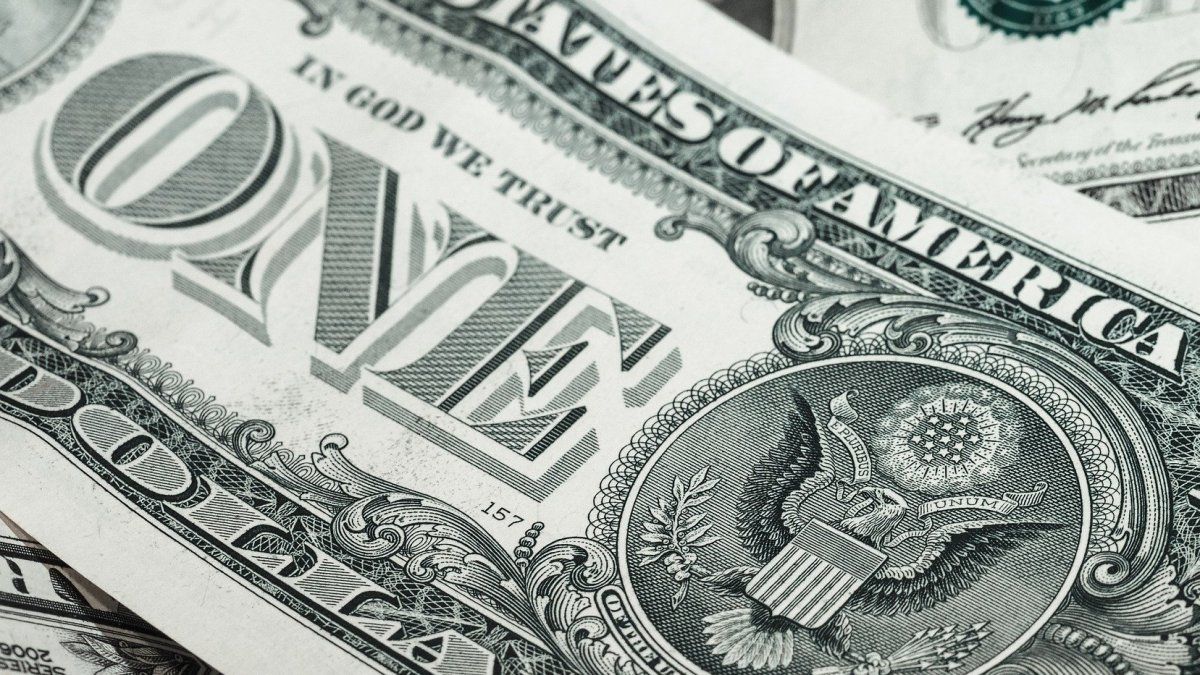In turn, the MEP dollar fell $1.54 (-0.5%) to $290.87. Consequently, the spread with the official reached 89.5%. Since last Friday, he accumulated a loss of $8.5.
The blue dollar, for its part, fell $1 and closed at $291.
Savings dollar price, Thursday, October 20
The dollar I save or solidarity dollar-which includes 30% of the COUNTRY tax and 35% deductible from Income Tax and Personal Assets- it rose 54 cents to settle at $264.45.
Price of the tourist dollar, Thursday, October 20
The tourist dollar or card -retailer plus COUNTRY Tax, and a 45% deductible perception of Income Tax and Personal Assets for consumption with cards abroad of up to US$300 per month- increased 58 cents to $280.47.
Quotation of the Qatari dollar, Thursday, October 20
The new qatar dollar -which includes 30% of the COUNTRY tax, 45% deductible from Income Tax and Personal Assets, and a new perception of 25% on account of Personal Assets – rose 66 cents to settle at $320.54, some $29.54 above the blue.
It is worth noting that this exchange rate applies to Consumption abroad with debit and credit cards greater than US$300 per month.
Wholesale dollar price, Thursday, October 20
The wholesale dollar, directly regulated by the BCRA, it rose 33 cents to $153.51.
Why the financial dollar falls
“weights are missing”operators agree when it comes to attributing the causes of the drop in financial exchange rates. “We see that the monetary adjustment, via rate hikes and absorption with Leliqs and repos, is drying up the market and slowing down the demand for dollars”describe in the market.
The Central Bank placed on Tuesday almost 1 billion pesos ($986,509 million or about US$6,455 million) in Leliq, with an expected return of 75% per year at 28 days. The operation resulted in a contraction of $163,077 million, against maturities for $822,975 million. Let us remember that the BCRA board left the rate unchanged last week in the 75% annual nominal given the prospect of a slowdown in inflation (in September it was 6.2% vs. 7% in August).
On Wednesday, moreover, the BCRA placed another $14,150 million in Notaliq with a 182-day term with a stable rate, while the entity declared the Leliq tender void for the same period. The yields offered were 83.5% per year for the Leliq and a spread of 8.5% for the Notaliq.
“News of a slowdown in inflation in September combined with interest rates close to inflation seem to be weighing on financial dollars. Likewise, liquidity needs in December may also be a factor in favor of stable interest rates.” change as the end of the year approaches,” explained from Delphos Investment.
Although in the accumulated figure for October, the Mutual Funds industry (FCI) registers net bailouts in all types of FCI (money market, CER, dollar linked, T+1, etc.), in the last three rounds the net subscriptions to the money markets returned. In the same period, in turn, the surety also increased the volume traded and, consequently, already compressed yields.
In this sense, John Paul Albornozan economist at INVECQ, told Ámbito that “The pesos are going to rate non-indexed assets such as money markets, or guarantee against a possible lower expectation of devaluation in the very short term, thanks to a Central Bank that got air in terms of reserves for a few months thanks to the soybean dollar” . In any case, he warned that this measure has a cost “of a deterioration in equity” and, more importantly, it gave “a bad signal for the future supply of foreign exchange, opening the door to new sectoral exchange rate incentives when the outlook for reserves becomes more pressing.”
On the other hand, Albornoz attributes the exchange pax to a “Greater demand for pesos to pay taxes, such as the advance payment of Profits.”
Outside the local situation, in the market too link the decline of the CCL and MEP with the decline of the US currency in Brazil between Monday and Tuesday.
“Free dollars are down and are again quite far from the inflation accumulated in recent months. Since the end of 2020, inflation has been 152% and free dollars have grown between 74% (blue) and 110% (CCL)”, they limited from Aurum Valores.
Global Focus Investments analyst Mauro Cognetta warned that “For now, the issuance of $1.2 trillion has not had an effect for what was the soybean dollar in September, plus other monetary faucets from the BCRA to buy securities. With which, this at some point will have an impact on the dollar free”. “Today the theoretical reference price of the CCL is $345”estimated.
It should be remembered that at the beginning of this week the so-called Import System of the Argentine Republic (SIRA), which replaces the Comprehensive Import Monitoring System (SIMI), a mechanism by which the Government it seeks to restrict the sale of foreign currency, which, in the opinion of business chambers, may lead to insufficient supplies being obtained to produce.
“The new authorization system to access the market again compressed the demand for dollars, allowing the monetary authority to absorb the excess available in the wheel”, said Gustavo Quintana, operator of PR Corredores de Cambio.
Source: Ambito
David William is a talented author who has made a name for himself in the world of writing. He is a professional author who writes on a wide range of topics, from general interest to opinion news. David is currently working as a writer at 24 hours worlds where he brings his unique perspective and in-depth research to his articles, making them both informative and engaging.




